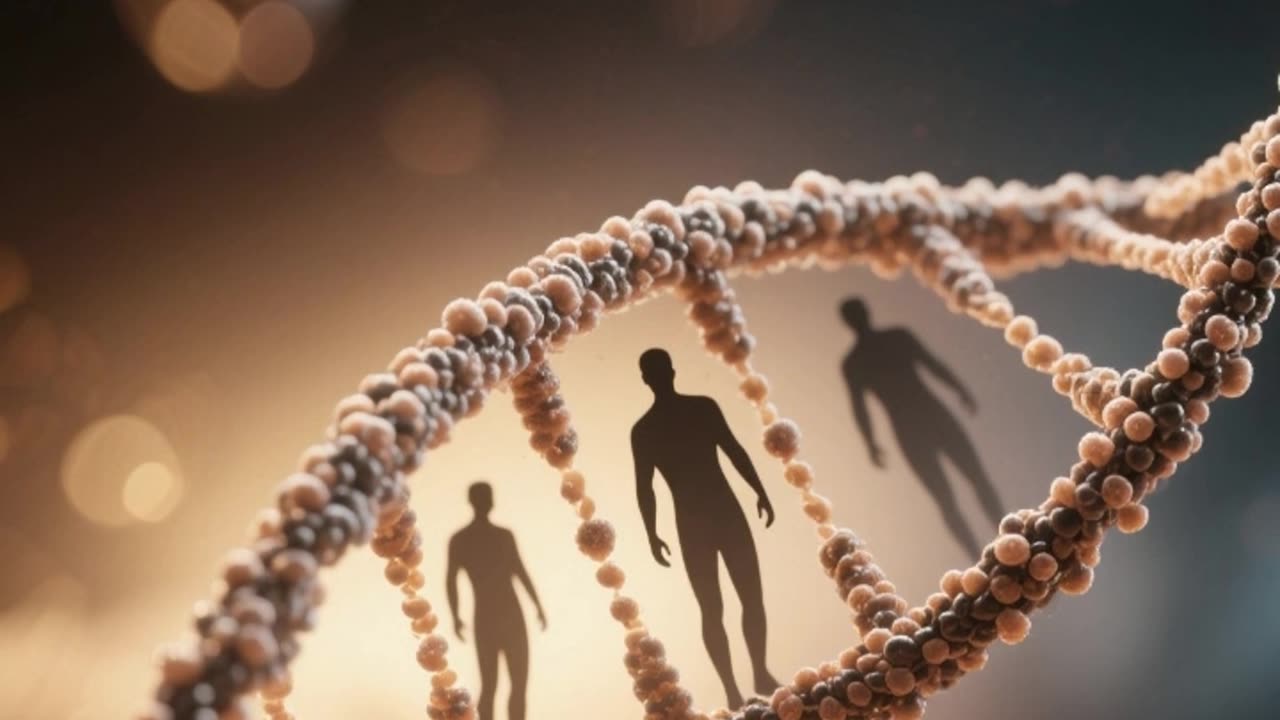Premium Only Content

One Long Chain: Human Evolution
Human evolution is a gradual process, so there wasn’t a single “first human”; rather, it’s a long family tree with many branches.
In human evolution, there wasn’t a single day when a non-human mother suddenly gave birth to a fully modern human child.
Instead, change happened gradually over thousands of generations.
Early Homo sapiens emerged from ancestral populations of Homo heidelbergensis and other hominins in Africa around 300,000 years ago.
Over time, the traits we call “human”, larger brains, symbolic thinking, and complex language, became more pronounced.
So, while scientists can pinpoint a period when we can classify a population as Homo sapiens, that moment was more like a slow fade-in than a light switch being flipped.
Our DNA still carries echoes of those earlier ancestors, reminding us that we’re part of one long, unbroken chain of life.
The evolution of humans is exactly that, a slow fade across countless generations into what we’d eventually recognize as fully modern.
And what’s truly remarkable is how genetically similar we are today.
Humans share about 99.9% of their DNA when looking at the most common variations (single nucleotide polymorphisms), and approximately 99.5% when including all types of genetic differences, such as insertions, deletions, and structural variants.
This underscores that, despite superficial differences, we are far more alike than different.
-
 13:26
13:26
Cash Jordan
13 hours ago“PORTLAND MOB” Storms ICE HQ… ‘COMBAT’ Troops Respond With EXTREME FORCE
26812 -
 16:00
16:00
Demons Row
11 hours agoBIKERS OF FLORIDA 💀🏍️ Outlaws, Warlocks, Mongols & the Wild South
1054 -
 22:01
22:01
Jasmin Laine
14 hours agoTrump’s BRUTAL WARNING Leaves Canada Speechless—America STUNNED
1.06K28 -
 11:42
11:42
China Uncensored
15 hours agoThe Chinese Military Turns Its Gun on Xi Jinping
1.66K8 -
 2:36
2:36
The Official Steve Harvey
14 hours agoThis Is Bigger Than Comedy — It’s About Saving Young Men
2032 -
 8:09
8:09
Hollywood Exposed
17 hours agoMatthew McConaughey EXPOSES The Real Reason He Left Hollywood
502 -
 29:38
29:38
Stephan Livera
2 days ago $2.23 earnedDay 2 - Stephan Livera hosts Plan B Podcast in Lugano
2.97K1 -
 DVR
DVR
vivafrei
16 hours agoLive from Lugano Plan B in Switzerland w/ Efrat Fenigson and Prince Filip Karađorđević!
48.7K1 -
 46:40
46:40
Bitcoin Infinity Media
1 day ago $6.84 earnedBitcoin Infinity Academy at Plan B Forum 2025
26.3K3 -
 18:12:15
18:12:15
Side Scrollers Podcast
1 day ago🔴SIDE SCROLLERS SUB-A-THON🔴FINAL DAY!🔴Craig Makeover + US Dart Throw + More!
563K32